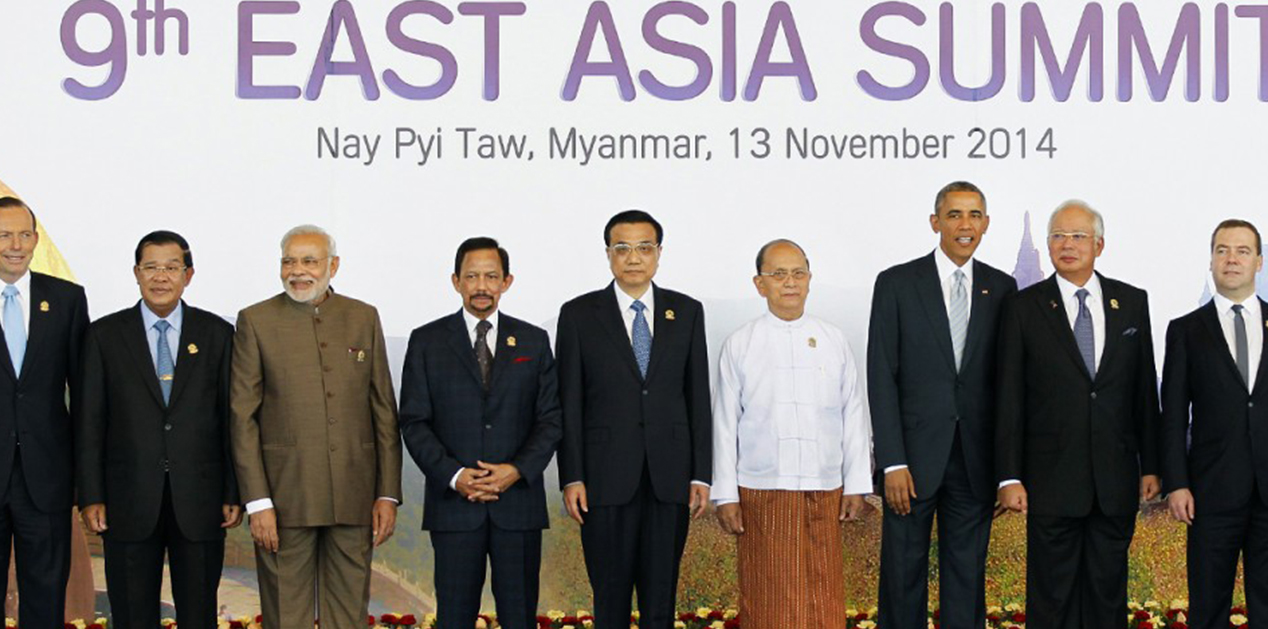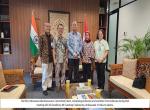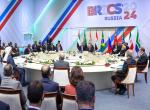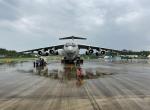Since early 1990’s when India ushered in economic reforms and amongst many other initiatives announced its ‘Look East Policy’, India’s vision has been to restore its traditional linkages with its immediate as well as extended neighbourhood. Promoting connectivity has been a key element of India’s policy objectives of seeking partnerships on economic, technical and strategic fronts in order to widen India’s development options in line with its national interests. As part of its multi faceted endeavours, India has promoted and supported a variety of regional and sub regional initiatives revolving around construction of multi-modal networks to facilitate trade, transportation and communications, increased people to people relations and cultural linkages. All these efforts are geared towards enhancing regional integration and moving towards what can be termed as a zone of shared prosperity.
After the present government took over the reins of power in May 2014, PM Modi has imparted added energy and dynamism to India’s neighbourhood policies. It was during his visit to Myanmar to attend ASEAN Summit in November 2014 that he announced transformation of India’s ‘Look East’ to ‘Act East’ policy thereby indicating that New Delhi is ready to put more substance in realizing the goals of such a policy. While Myanmar is a lynchpin and one of the most important gateways for getting connected to the ASEAN and the region beyond India’s Northern Eastern States also have a greater role to play by serving as a firm base for launching India’s Act East policy.
North East Region: Launch Pad for Acting East
The new government after having taken over in May 2014 has been paying special attention to the development of North-Eastern Region (NER), and its critical role in the success of India’s ‘Act East Policy’. There are at least ten national level projects of railways and infrastructure which are in the process of being implemented. But most of the projects are facing inordinate delays and cost overrun. For instance, Subansiri Lower project for producing hydro power of 2000 MW has been beset with completion vows.
After assuming power, Prime Minister Narendra Modi made a maiden visit to North East Indian states in end November 2014 for three days. Modi’s visit to the region was aimed at not only to impart momentum to the development of North-Eastern States but also was designed to add substance to much talked about and much needed integration of NER with rest of India and as a corollary with its international neighbours. PM Modi also revealed during his visit that the Central government has earmarked Rs. 53,000 crore for development of the North East that includes construction of 14 railway lines, improvement of the power network and boost for the tourism sector.
Given the emphasis of the present political leadership on ‘Act East’, it is necessary that firstly, the connectivity and development issues pertaining to NER are dealt with on fast track basis. Secondly, own multimodal networks and communication links need to be extended to the borders at a number of points and obstacles and impediments for trade and commerce need to be overcome. Thirdly, innovative inputs would be required to hone up our foreign, defence and internal security and trade policies that would impart momentum to our ‘Act East Policy’. Evidently, all these three prongs would have to be progressed simultaneously.
Integrating with Neighbouring Countries
In recent years there has been very discernible improvement in relationship with neighbouring countries like Bangladesh, Myanmar and Nepal which has enabled India to establish a sub-regional Bangladesh, Bhutan, India and Nepal (BBIN) initiative. It has four major pillars of regional cooperation in the areas of trade, connectivity and transit, investment in power generation and water management sectors, cooperation in energy area, through power trade and converting national grids into a sub-regional grid, and finally, increased people to people relations. Signing of BBIN Motor Vehicle Agreement (BBIN-MVA) in June 2015 is aimed at facilitating smooth movement of personnel, cargo, and vehicular traffic across the borders. This agreement is viewed as one of the key achievements of this sub regional grouping and is a first step towards for ultimate economic integration of the sub region. Further, BBIN initiative would also be a contributory factor towards developing our NER and adding heft to our Act East Policy.
Getting access through Bangladesh to connect our NER has been cherished goal of our governments. It would shorten the distances, give transit revenues to Bangladesh, and access from Chittagong port to Tripura and beyond could become an important gateway for India to its North-East and even to the SE Asia. Gas pipeline from Myanmar through Bangladesh and beyond to India could enable Bangladesh to earn transit revenues that would mitigate its trade imbalance with India. Thus BBIN initiative when fully realized would bring about a win-win outcome for all the member nations.
Myanmar as Gateway to South East Asia
During the recent visit of the new President Htin Kyaw of Myanmar in end August, agreements pertaining to construction of 69 bridges and upgrading of the Kalewa-Yargi section of the Tamu-Kalewa section of the trilateral highway connecting India, Myanmar and Thailand were signed thus giving salience to enhancing connectivity. Last year in October, the Union Cabinet had given approval for the revised cost estimate of Rs.2900 crores for the Kaladan Multi Modal Transit Transport Project in Myanmar; progress on this project was also reviewed. The project provides an alternate access to the North-Eastern Region of India and contributes towards the region's economic development. The Project is meant for shipment of cargo from the eastern ports of India to Myanmar as well as to the North-Eastern part of India through Myanmar. This project, which will connect Sittwe Port in Myanmar to the India-Myanmar border, will open up the sea route for movement of products. It would also provide a strategic link to the North-East, thereby reducing pressure on the Siliguri Corridor.
PM Modi mentioned to the visiting President that India was ready to increase power supply to Myanmar and emphasized that Myanmar holds a unique position as a “land bridge that connects India with Southeast Asia”. He appreciated Myanmar’s new era of democratic leadership and the commitment of Myanmar’s people to democracy. PM Modi also conveyed to President Htin Kyaw that India was supportive of the peace process which was being given shape in the ‘21st Century Panglong Conference’ between the Myanmar government and its ethnic rebels. India’s experience of reaching an accord with Mizo National Front and the Indian officials connected with it have been involved in the new initiative by the Modi’s government. Further, a new Integrated Check Post on Mizoram-Myanmar border has been inaugurated last year. It is therefore quite evident that security and stability will contribute to development and furthering of India’s objectives of Act East Policy.
Connectivity to South East Asia
The BBIN initiative resonates very well with India’s efforts at bilateral, multilateral and sub-regional levels to connect to SE Asia. India has intensive engagements with Myanmar, Thailand, Vietnam, Singapore and other nations of SE Asia. Mekong-Ganga Cooperation Initiative (MGCI) and Bengal Initiative for Multi-Sectoral Technical and Economic Cooperation (BIMSTEC) are some of the sub-regional initiatives of India that aim to engage the regional countries in a wide variety of fields. Engagement of India with ASEAN countries also covers a number of areas that include political-security, economic and social-cultural relations. To that end, India has been participating in ASEAN Regional Forum (ARF), the Post-Ministerial Conferences (PMCs), ASEAN+1, East Asia Summit (EAS), and Treaty of Amity and Cooperation in Southeast Asia (TAC).
Mekong-Ganga Cooperation Initiative: Poised for Further Growth
As part of this renewed 'Look East' and now ‘Act East’ initiative, India spearheaded the Mekong-Ganga Cooperation Initiative (MGCI) in November 2000, with India, Cambodia, Laos People’s Democratic Republic, Myanmar, Thailand, and Vietnam as members. All these South East Asian countries are part of the Mekong River basin. MGCI has four basic objectives apart from identifying common heritage and cultural linkages. These are: tourism, culture, education and transport and communications. These initiatives included Mekong-Ganga Tourism Investment Guide, promotion of tourism in famous cultural and religious sites, preservation of ancient manuscripts, heritage sites and artifacts, increasing student exchanges through providing scholarships, and improving and developing road, rail and air links between these sites. This multilateral initiative was not only designed to improve the cultural ties, but also strengthen the commercial links and connectivity between India and the member states.
It also needs to be noted that this initiative could be said to have been somewhat in political and economic competition to the Greater Mekong Sub Region (GMS) development project. This project was initiated in 1992 and based in Kunming of the Yunnan Province of China to integrate the upper and lower riparian states through a network of multimodal corridors. While China’s emphasis was to develop linkages in the direction of North to South, India’s emphasis was to develop multi-modal corridors from West to East. Indeed, China, due to its economic muscle and nature of its political system, has been able to attract the GMS countries into its economic vortex whereas the Indian initiatives in the region still have to acquire some momentum due to many contextual problems.
BIMSTEC on the Road to Connectivity
The regional sub-grouping BIMSTEC, with Bangladesh, Bhutan, Nepal, India, Myanmar, Sri Lanka and Thailand as members, links South Asia with Southeast Asia. There is also a view that India, having failed in its efforts to put South Asian Association for Regional Cooperation (SAARC) on an even keel due to obtuse policies of Pakistan, promoted BIMSTEC as an alternative to SAARC. If BIMSTEC can implement its connectivity and allied projects in a fast track mode then seen purely from Indian perspective, the China sponsored Bangladesh, China, India and Myanmar (BCIM) grouping may not be of much relevance as it will include all the countries less China and would also integrate India’s NE region with the ASEAN.
Though BCIM forum for regional cooperation has been upgraded to a track one initiative in recent years the progress of this grouping is expected to be very slow. This is largely because of the prevailing geo-political situation, especially due to the state of Sino-Indian relations. Even though this grouping might offer some scope for the NE Region of India to be developed and enable it to reap benefits from improved connectivity and commerce, apprehensions about security and China’s claims on Arunachal Pradesh militate against the objectives of this forum, because China has not been sensitive to India’s legitimate concerns on economic and strategic issues. Moreover, Japan has been funding a number of infrastructure and connectivity projects in India’s NER and is involved in a major way in BIMSTEC sponsored projects.
Additionally, the BIMSTEC forum was specifically created to combine India's 'Look East’ - ‘Act East’ policy with Thailand's 'Look West' policy by using India’s NER as a launch pad. Overall, it aimed to create a conducive climate for economic development and social progress in the sub-region, promote collaboration and mutual assistance in areas of common interest through exchange of training and research facilities, foster co-operation in joint efforts and projects that enhance national development of member states, and maintain close relationships for mutual benefit in existing international and regional organisations. Further, the member states have identified 13 priority sectors to address: trade and investment, technology, energy, transport and communication, tourism, fisheries, agriculture, cultural co-operation, environment and disaster management, public health, people-to-people contact, poverty alleviation and counter-terrorism and trans-national crimes.
While the plan to develop the NER has been engaging Indian government’s attention, New Delhi has also reached out to Japan and others in the wider East Asian region as part of its Act East efforts. Japan is considering joint projects with India in some of the ASEAN countries besides expressing its interest to invest in India’s North East. PM Modi has recently attended the ASEAN-India and East Asia Summit in Vientiane, Laos, where plans to revitalize relationships with ASEAN and East Asian countries in both economic and security fields had been in agenda. Before the Vientiane summit he visited Vietnam which plays a key role in India’s realization of its Act East Policy. Strengthening of economic and strategic relationship by Vietnam contributes greatly to fructification of India’s Act East policy.
Clearly, within a short period, the Narendra Modi government has taken steps to give a boost to the ‘Act East Policy’. In that regard, the statement made by the External Affairs Minister Sushma Swaraj to the Indian Heads of Missions when she visited Vietnam on 26 August, 2014, that India has to not just ‘Look East’ but ‘Act East’, seems to bearing fruition.
Conclusion
Development of infrastructure and connectivity networks in the North East region and their linkages to Myanmar and beyond, whether over land or through maritime domain, remain intrinsic to the success of India’s ‘Act East’ Policy. Without improving connectivity and other infrastructure in the NE and neighbouring countries like Bangladesh and Myanmar, that policy would stand on a very loose ground. India is widely envisaged as a key power and one of the major stakeholders in the emerging Asian security dynamics. The Modi government has been emphasizing on giving urgent attention to the speedy completion of many Indian sponsored projects to facilitate people-to-people contact and improve trade and investment opportunities. Moreover, friendly relations with Myanmar, Thailand, Vietnam, Malaysia, Indonesia and other ASEAN countries are crucial for peace and prosperity in the region. Similarly, enhancing engagement with East Asian Community would further lead to achieving goals of India’s Act East endeavours. To that end, prospects for a direct flight from Delhi-Bodhgaya-Yangon are likely to be materialize given the earnestness of Modi administration.
India’s greater role and participation in the security architecture of the region, as also in finding innovative ways and means to enhance India’s presence in the Southeast Asian region are of immense importance, not just to India but also to the countries of the East Asian region. These are important components of the ‘Act’ East Policy as without robust regional trade, economic investment and physical connectivity, India will not be able to achieve its goals.
Published Date: 14th September 2016, Image Source: http://www.irrawaddy.com
(Disclaimer: The views and opinions expressed in this article are those of the author and do not necessarily reflect the official policy or position of the Vivekananda International Foundation)











Post new comment